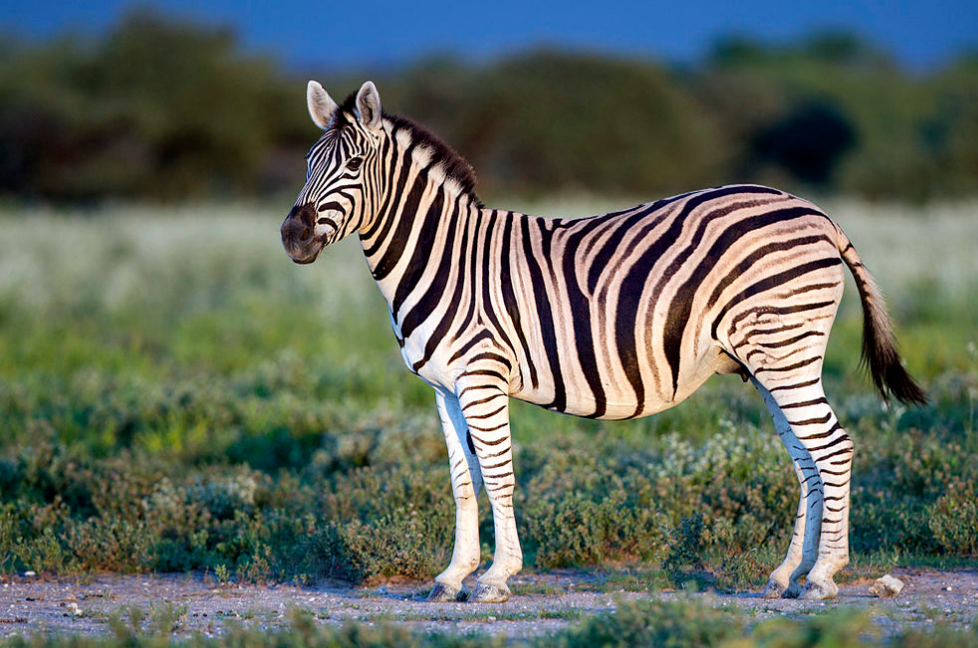Why The Zebra Got Its Stripes
As animals go, zebras are amongst the coolest-looking. They’re horses, sure, but they come with a really great striped suit from head fo hoof. Really, take a look — they’re glorious.

But like most non-human animals, zebras don’t really care about fashion. For them — and for basically every animal — what they look like is a function of evolution, not style. But the evolutionary purpose was, until recently, one of science’s biggest mysteries. As the BBC notes, “how and why zebras evolved to sport black and white stripes are questions that have tested scientists for over a century.” Continues the BBC, “scientists have put forward at least 18 reasons why, from camouflage or warning colors, to more creative explanations like unique markers that help to identify individuals like a human fingerprint.”
But the most likely answer is none of those. Rather, our best guess is that is has something to do with what Wikipedia editors describe as the “biting, bloodsucking Tabanidae.” You probably know those creatures by more common names: the horsefly or gadfly. The above-linked BBC further explains:
Flies that bite and suck blood are a common menace to animals in Africa. Horseflies and tsetse flies also transmit diseases like sleeping sickness, African horse sickness, and the potentially fatal equine influenza. The thin hair of a zebra would pose little barrier to biting flies. But analyses of tsetse flies’ diets found no trace of zebra blood.
Interesting, for sure, but like the other theories, it requires testing. So how do you test this theory? An actual fashion show — but for horseflies.

Yes, that’s a horse in a zebra-like poncho. As the Guardian (from where that picture comes) explains, researchers spent “more than 16 hours standing in fields and noting how horseflies interacted with nine horses and three zebras – including one somewhat bemusingly called Spot.” And what they found was that “while horseflies circled or touched the animals at similar rates, landing was a different matter, with a lower rate seen for zebras than horses.”
But that could have been due to a lot of different factors, e.g. the horses’ smell or the zebras’ lack thereof. To account for these factors, out came the zebra suit: “the researchers put black, white and zebra-striped coats on seven horses in turn.” And they found that, again, “there was no difference in the rate at which the flies landed on the horses’ exposed heads, they touched and landed on the zebra coat far less often than either the black or white garment.”
Whether this has any practical effect for people is unknown, although perhaps it could be, as horseflies and tsetse flies will bite humans, too. (Tsetse flies transmit the parasite that causes sleeping sickness in humans, for example.) In fact, one of the researchers told the Guardian that “outdoor enthusiasts could take inspiration from zebras, suggesting patterned tops and body paint as useful tools to help them dodge nasty bites.” So before you go on safari, consider getting yourself a zebra-patterned poncho, maybe?
Bonus fact: If you want to see donkeys with stripes, you won’t find any in sub-Saharan Africa. You may, though, see them in Tijuana, Mexico — but only because they’re painted that way. As NPR reports, “zonkeys” — donkeys painted with black and white stripes — have been a long-standing tradition and tourist attraction of the town. But as tourism has dipped over the last decade, the tradition may be at risk; as of 2013, the people who operated the zonkey businesses had only three zonkeys left in the downtown Tijuana area.
From the Archives: Razzle Dazzle: Hey, zebra stripes are good for war, too!
